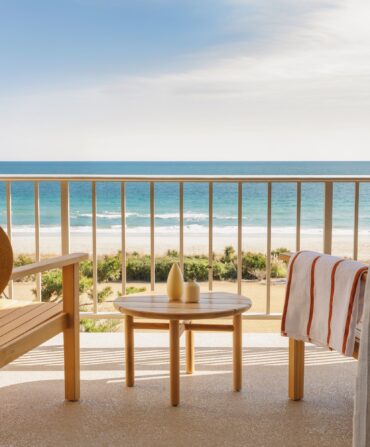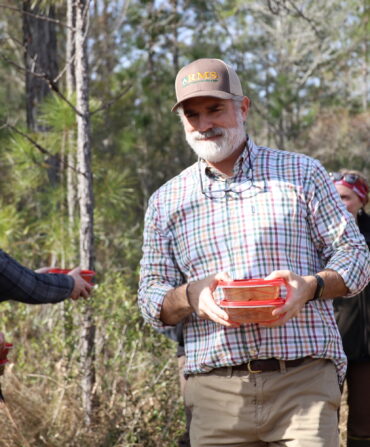Food & Drink
G&G’s Hot List: 30 New Restaurants to Try Now
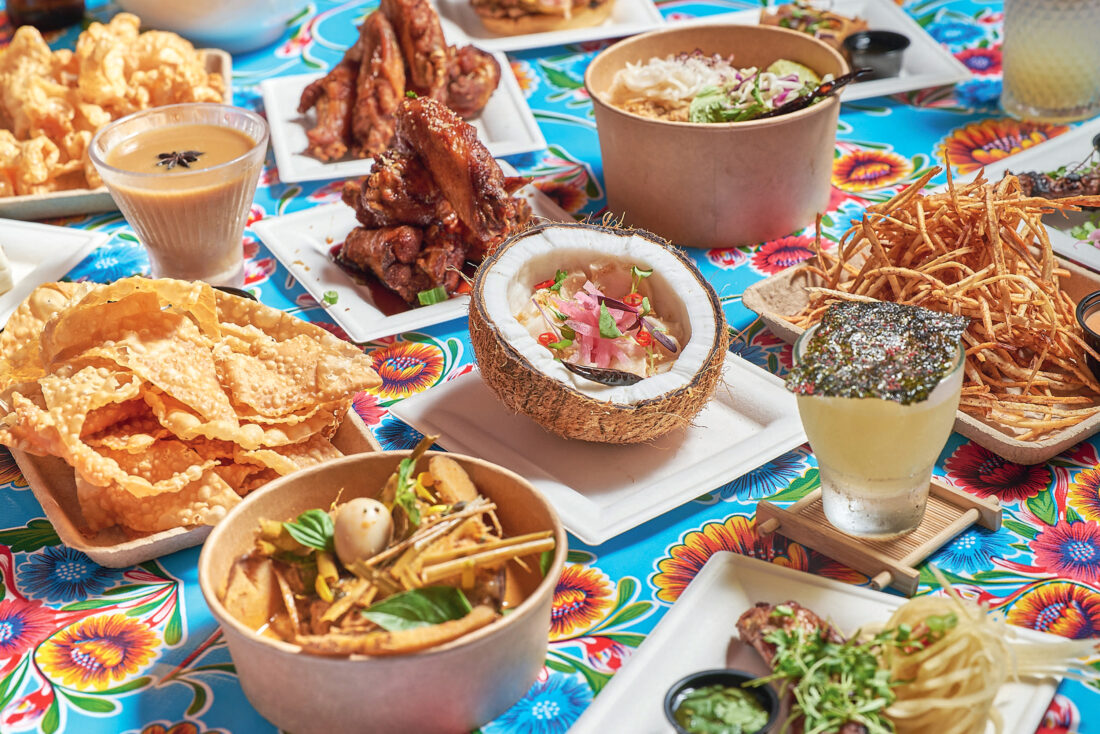
Photo: ish holmes
Running a restaurant has never been easy, and these days it hasn’t gotten any simpler. Which makes these gems all the more remarkable. To compile this list, we focused on places that opened in 2023 or later and canvassed the region with the help of our most trusted food-minded contributors for spots that wowed them. Some are fancy, some just plain fun, but all make a compelling case that the South’s culinary landscape has never been richer.

Kisser
Nashville, Tennessee
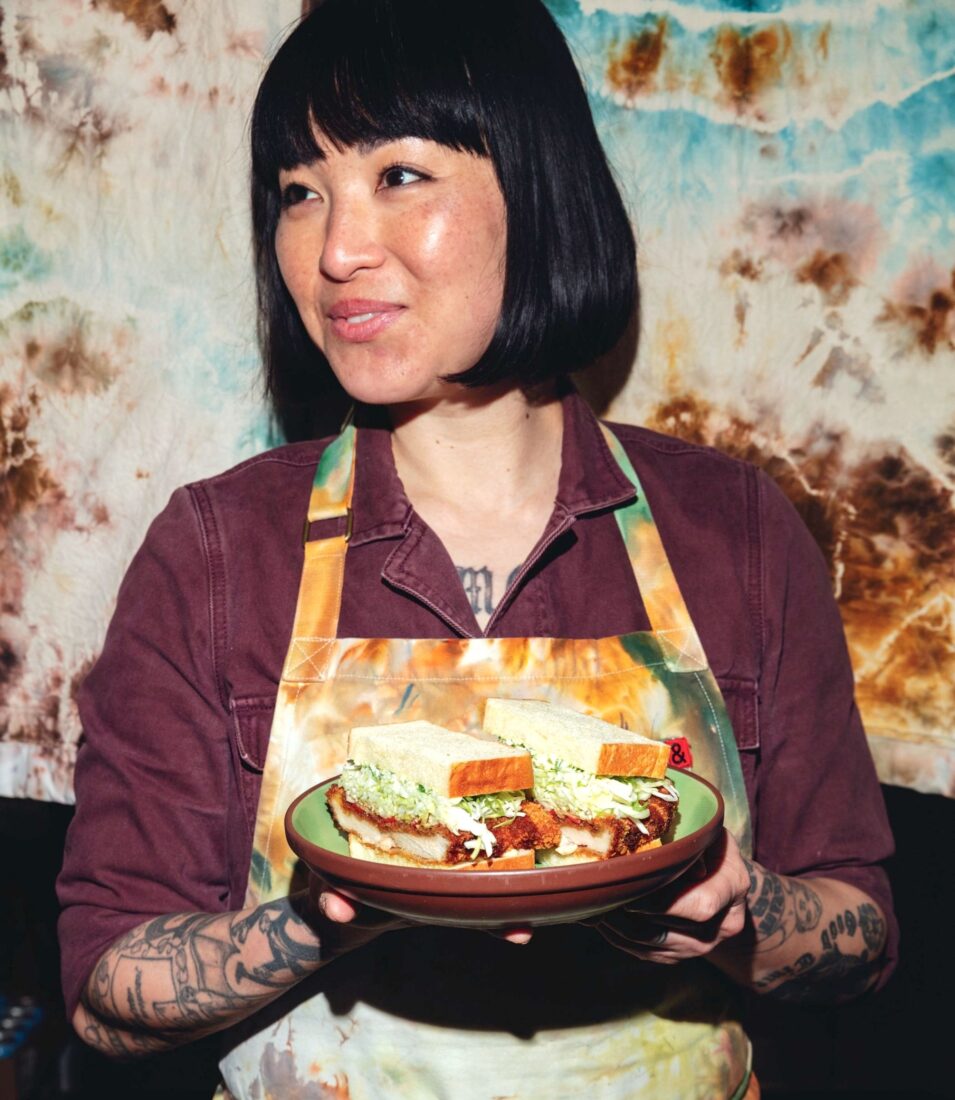
Photo: CEDRIC ANGELES
Leina Horii of Kisser.
Nashville has long been a great lunch town, famous for meat-and-three restaurants open from around ten to two, serving fried chicken and collards on divided lunchroom plates. Kisser, a Japanese-inspired lunch and brunch spot from the husband-and-wife chef team of Leina Horii and Brian Lea, delivers a twenty-first-century expression of that ethic, keeping much the same hours while serving miso-marinated cobia and green beans in lacquered bento boxes. Onigiri, stuffed triangles of sushi rice blushing pink with cod roe and crossed with grill marks, arrive with planks of toasted seaweed. Pounded chicken breasts, coated in panko, come flanked by furikake-dusted rice on one side, an eddy of gentle yellow curry on the other. The whole dang thing is Zen. —John T. Edge
Bayonet
Birmingham, Alabama
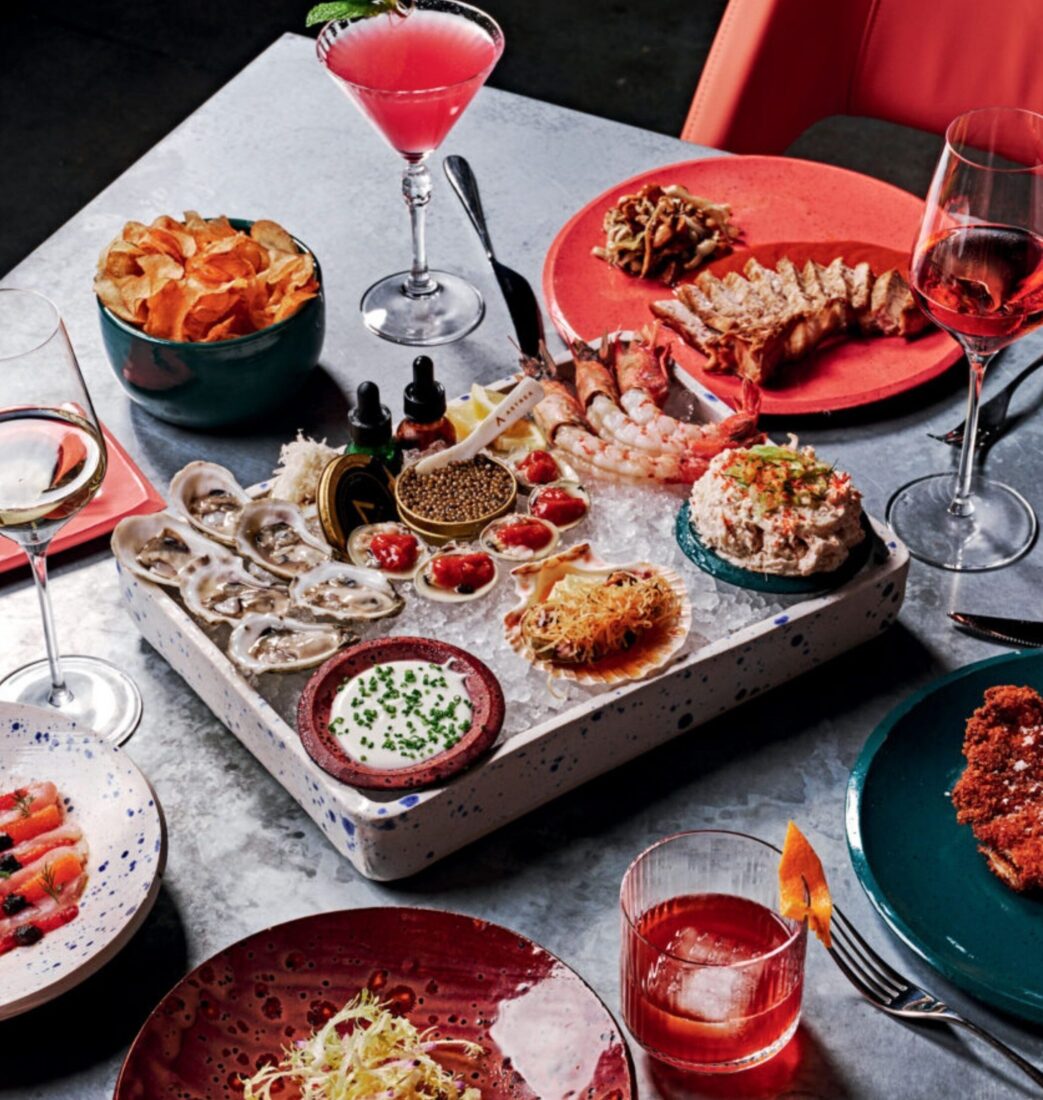
Photo: ANDREW THOMAS LEE
Gulf swordfish, cobia schnitzel, raw bar selections, and crudos at Bayonet.
“I want it to sing,” says chef Rob McDaniel of the seafood that powers Bayonet, the spot he opened this past spring on a vibrant downtown Birmingham block next to his steak house, Helen. Sing it does, hitting high notes in a whole side of flounder with frenched rib bones, served with an ash-oil-infused buttermilk sauce poured over its crackly skin; caviar-crowned egg-salad finger sandwiches; a dozen-plus farmed oysters on offer daily; and a single oyster (and its briny liquor) soloing in the signature martini, stirred tableside. The ambience broadcasts the same mix of elevation and fun, from the vintage oyster plates decorating a wall to the octopus wallpaper in the restrooms to the raw-bar shucker’s seahorse tattoo. “With this place,” McDaniel says, “I’ve fallen in love with what I do all over again.” —Jennifer Kornegay
Avize
Atlanta, Georgia
Karl Gorline has never been to Germany, but—thanks to his Bavarian forebears—he did grow up eating wurst and sauerkraut in Mississippi. So when the chef was casting about for a concept for a new restaurant and a friend suggested “modern Alpine,” something clicked. At Avize (“a-veez”), the Alps are a whole vibe that inspires Gorline and sommelier and general manager Taurean Philpott to let their imaginations run free. A rye cocktail flavored with pine and maple arrives in its own decanter atop a glass holding a gorgeous piece of hand-cut ice, and every guest starts the meal with a tremulous custard served in an eggshell. Gorline’s showstopper entree is a Rohan duck that’s dry-aged for two weeks, cold-smoked over botanical hay, then roasted and served with a classic sauce bigarade. The cooking here is playful but also fierce—not unlike the enormous taxidermied mountain goat that stands sentry over the dining room. —John Kessler
Kooban Café Mexicano
Hanahan, South Carolina
At first, Kooben was going to be a traditional coffee shop with service restricted to fresh conchas and inventive espresso drinks. But once Jaime Tinoco saw the dining room his wife, Pamela Sierra, had designed, they decided to upgrade their menu to match the decor, inspired by the hottest places to brunch in Mexico’s big cities and expat capitals. Now Hanahan, South Carolina, a growing Charleston suburb, is home to some of the most exquisite Mexican breakfast dishes east of the Mississippi. Split and prepared like French toast, conchas come topped with homemade plantain ice cream and drizzled with sticky cajeta. But there’s nary a dud in a lineup that ranges from chilaquiles to corn pancakes, a delicious salute to the crop that unites Latin America and the American South. —Hanna Raskin
Kinfolk
Memphis, Tennessee
Cole Jeanes grew up eating gas station sausage biscuits, smeared with grape jelly, in the cab of his father’s pickup after hunting trips. And buttermilk biscuits, stuffed with bacon and eggs, at his mother’s kitchen table on school mornings. Those roots show at Kinfolk, a sort of new-generation Waffle House just west of downtown Memphis on Mud Island, where he and his crew bake gleaming herb-flecked biscuits glossed with honey. Jeanes’s citified chef training shows, too: in French rolled omelets, golden yellow envelopes with jiggly insides, and bowls of stone-ground grits, topped with oyster mushrooms and sunny-side-up eggs, ringed by halos of chile-garlic crisp. In that ongoing dialogue between country and city, breakfast on the Mississippi River reaches new heights. —JTE
Maude & the Bear
Staunton, Virginia
The four-course tasting menu here offers plenty to satisfy appetites and ample evidence as to why chef Ian Boden’s follow-up to the Shack, his other celebrated restaurant in the small Shenandoah Valley town of Staunton, has become the talk of local gourmands. That course quartet, which might feature morels piped with scallop puree or pheasant breast with sour cherries and hickory nuts, proves there are still discoveries to be made in Boden’s trademark synthesis of local, Appalachian-leaning ingredients and his Russian Jewish heritage. Whether guests are regulars or visitors spending a night in the culinary inn’s upstairs rooms, he treats them all as extended family. “While the foods may not look like a home-cooked meal,” he says, “we approach our menu with that kind of warmth and hospitality in mind.” The only risk of not going with the seven-course option? The intense FOMO of watching other diners swoon over three extra plates. —Steve Russell
Acamaya
New Orleans, Louisiana

Photo: Joseph Vidrine
Sisters Lydia (left) and Ana Castro of Acamaya.
It has never been easy to send visitors to New Orleans to new restaurants, particularly ones that don’t serve “New Orleans cuisine.” Why give them what they can get elsewhere—no matter how remarkable—when what they can get here is so distinctive? Acamaya, the modern Mexican seafood restaurant from sisters Ana and Lydia Castro, leaps this hurdle by simply being the most mature, accomplished, and pleasurable spot to open in New Orleans in years. From a tuna tostada worthy of Mexico City’s Roma Norte to belly-warming entrees like the thumbnail-sized masa dumplings called chochoyotes with crab, or arroz negro, slicked with huitlacoche and seafood, this is layered, intricate, electric cooking that does its city and its wider influences equally proud. —Brett Martin
Albertine
Charlotte, North Carolina
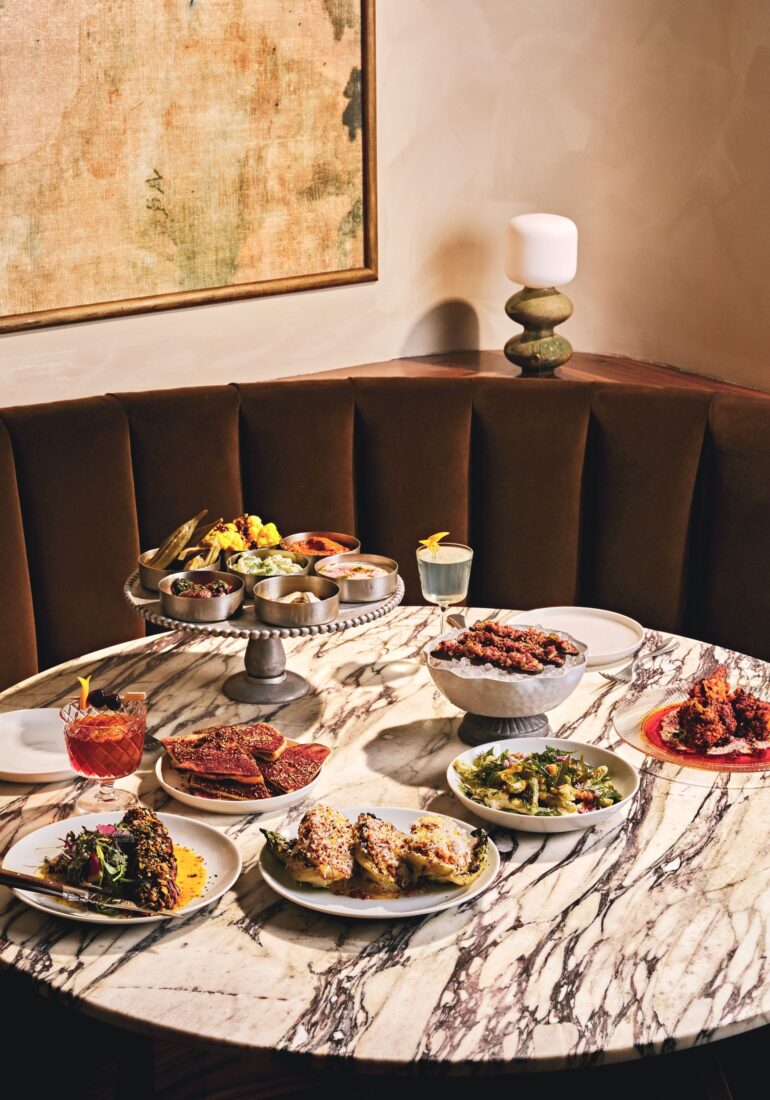
Photo: ANDREW THOMAS LEE
Dining at Albertine: a meze platter, grilled short rib, Venetian-style artichoke, grilled little gem salad, and razor clams.
What’s the height of hospitality? One contender for pinnacle status is presenting reading glasses to a squinting patron. It’s telling that the servers at Albertine, Joe and Katy Kindred’s ambitious uptown Charlotte riff on fine dining, are both alert to guests’ unspoken needs and determined they shouldn’t miss out on any part of the restaurant experience. A going-out gusto that’s been in short supply since 2020 animates Albertine. Even better, the fun implied by upholstered banquettes and interesting wines priced to try doesn’t fade when the food arrives. The menu makes good on its Mediterranean promises, from a soulful tuna-based taramasalata to a practiced lamb kefta, but with some decadent detours: The bone marrow Bordelaise is rich enough to worry about capital gains taxes. —HR
Mothers Best Fried Chicken
Decatur, Georgia
A glossy of Colonel Sanders, scribbled with devil ears, a forked tail, and low-key profanity, hangs on the wall at Ean Camperlengo’s shoebox café, on the back end of Decatur Square. Behind the counter, a Nintendo setup promises free Super Mario games, and a frozen drink machine swirls with Irish coffee. Inspired by Popeyes, Publix, and corner gas stations, Camperlengo wanted to create his perfect bird, developing an elaborate spice brine that reaches to the bone. Dredged in buttermilk and hot sauce, tossed in seasoned flour, and plunged in deep oil, thighs and drumsticks turn hypercrunchy and get dusted with more spices. Crinkle cuts, fried in that same oil, pick up a blast of umami. Collard green coleslaw cools down the wild ride. —JTE
Bintü Atelier
Charleston, South Carolina
When chef Bintou N’Daw was a little girl, she bounced back and forth between her Muslim grandmother’s home in Dakar and her Catholic grandmother’s home in Normandy. Her path doubled as the family’s trade route, with N’Daw carrying calabash spoons north and vegetable peelers south. Nowadays, her fluency in both Senegalese and French kitchen traditions resounds in her impeccable cooking at Bintü Atelier, the West African–inspired restaurant that Charleston sorely needed. While her husband, Tracey Young, minds the tiny dining room and patio (and the house-made juices and ice creams), N’Daw applies classical techniques to dishes that highlight the many ingredients and culinary customs enslaved Africans brought to the American coast: Yams bolster a smoky crab sauté; tender jollof red rice supports snapper; and okra anchors a complex peanut stew. —HR
Tuk Tuk Snack Shop
Lexington, Kentucky
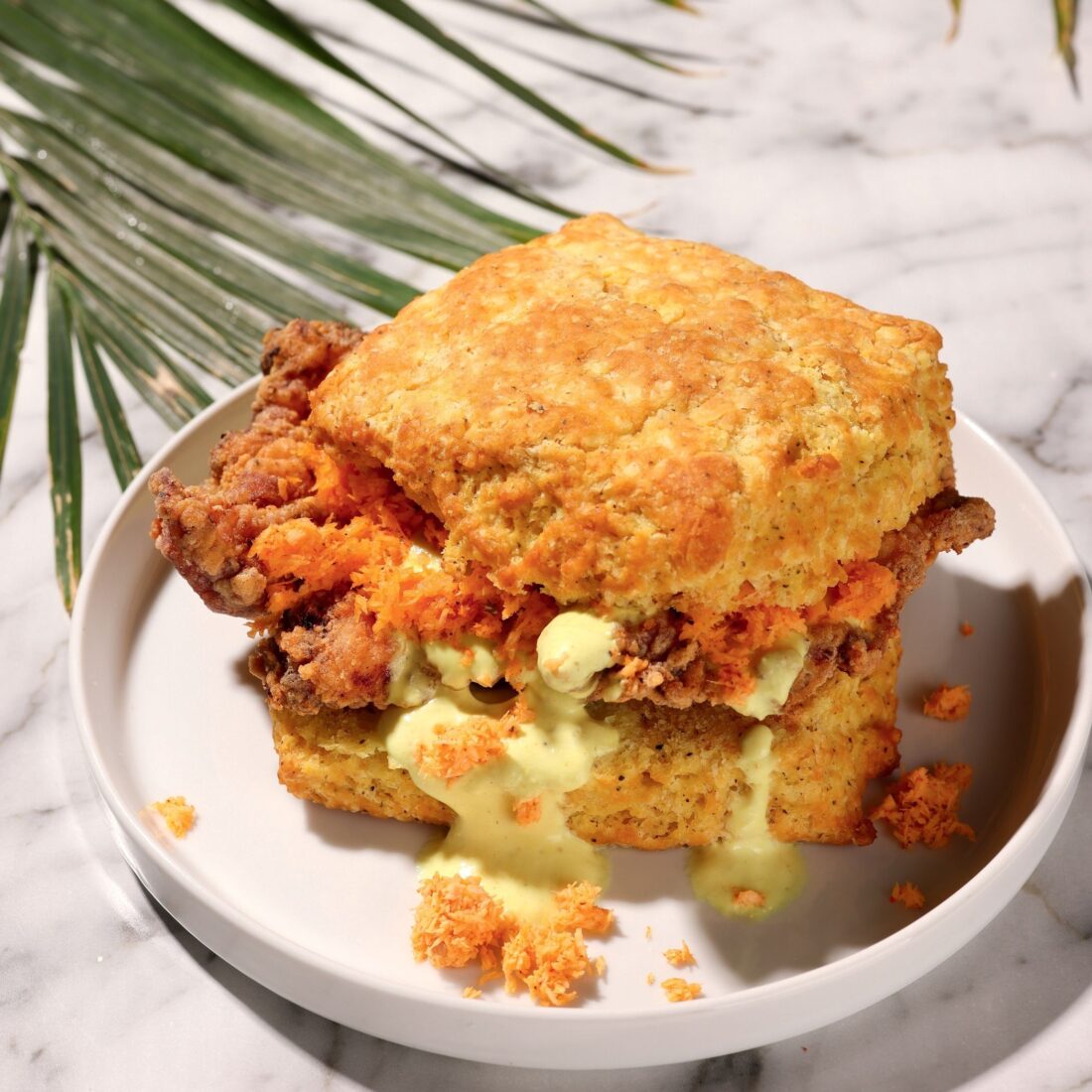
Photo: Jessica Ebelhar
Tuk Tuk’s biscuit and gravy with fried chicken.
A turmeric black pepper biscuit and gravy, with jackfruit curry and coco sauce. House-made pasta topped with lump crab in a curry cream. If you’re really lucky, you might be at Tuk Tuk on a night when the lightly spiced spin on chicken and dumplings is available, a dish meant “to evoke the rib-sticking comfort of someone cooking for you because they love you,” says chef-owner Sam Fore, a description that could also double as a mission statement for her restaurant. Fore marries the cuisine she learned from her Sri Lankan family with the classic Southern fare she came to love growing up in Kentucky and North Carolina to create comfort food of the highest order, served in a small space that feels expansive with its plentiful light, bright hues, and lush greenery. The colorful cocktails are equally enticing, including a rotation of zero-proof options. —Silas House
Judith
Sewanee, Tennessee
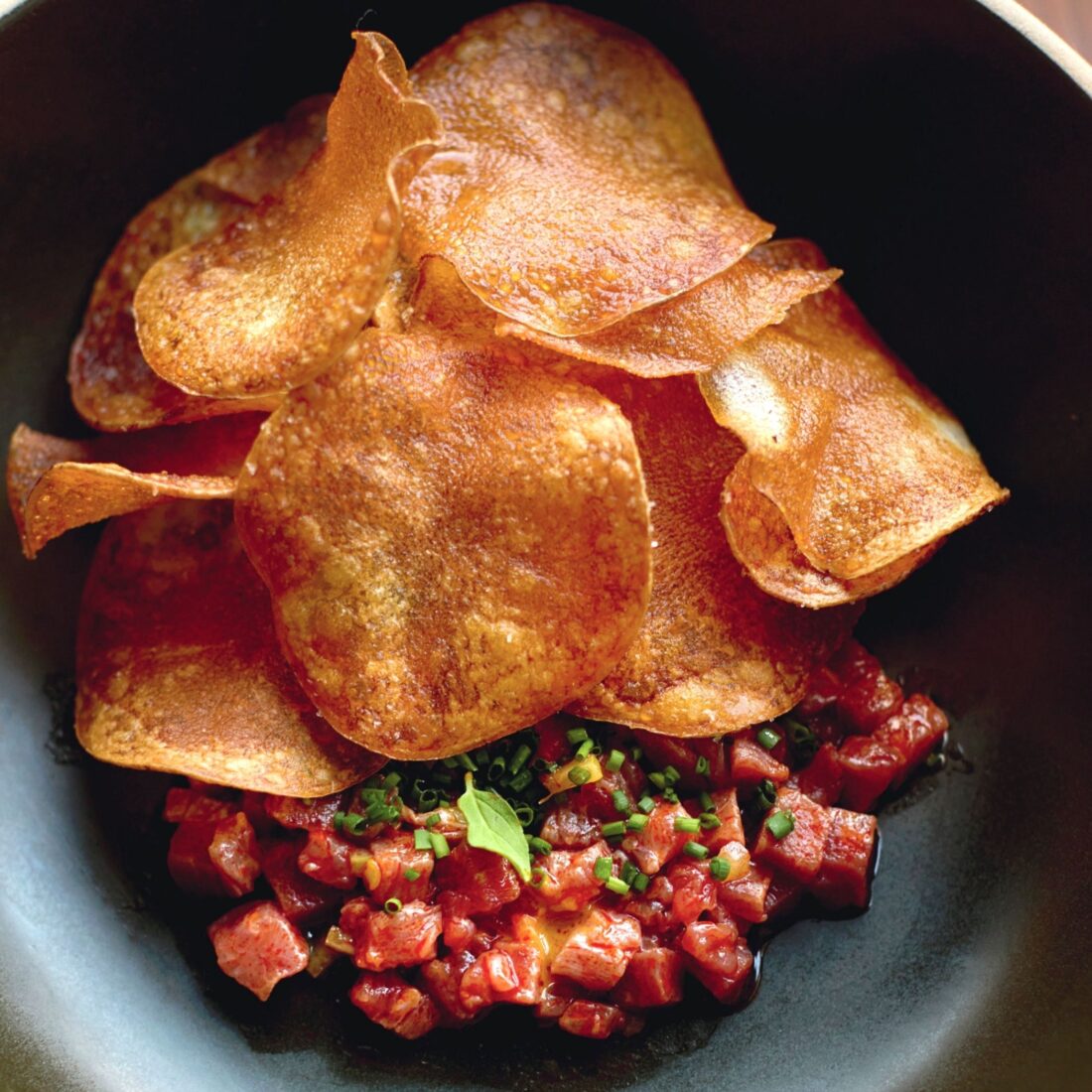
Photo: Emily Dorio
Judith’s tartare.
From a corner banquette inside Judith, the restaurant chef Julia Sullivan opened on the University of the South’s campus, wide windows frame stands of trees as afternoon sunlight illuminates white walls punctuated with estate-sale-sourced art. The simple elegance complements the sophisticated yet unfussy culinary approach she honed at her Nashville restaurant, Henrietta Red. Here in Sewanee, it shines in the crunch of paper-thin green apple and fennel slices studded with dried currants and white cheddar shreds; the velvet kiss of chicken-liver mousse on grilled sourdough; and the creamy zip of yogurt bringing balance to a smoked chicken quarter. Sullivan’s dad graduated from the university, and she named the restaurant in honor of the first woman to matriculate. “I wanted to highlight one of the community’s key moments,” Sullivan says, “because Judith is for this community.” —J. Kornegay
Hot Stuff
New Orleans, Louisiana
Few things are more difficult in restaurants than making them look easy. Mason Hereford has proved himself a master of that, starting almost a decade ago with Turkey and the Wolf, his twisted take on a neighborhood sandwich shop. Since then, his idiosyncratic exploration of American restaurant forms has moved on to breakfast (Molly’s Rise and Shine) and cocktail-forward dining (Hungry Eyes) before landing on the classic Southern meat-and-three at Hot Stuff. Here again, he and chef Nathan Barfield apply a preternatural gift for deliciousness and a level of care and attention that belies the stoner trappings: the bite of cracked pepper on a hamburger steak, the deep jamminess of stewed tomatoes and okra. As at every one of Hereford’s places, you do not want to miss a trip to the restrooms. Suffice it to say you should press the red button. —BM
Pulito Osteria
Jackson, Mississippi
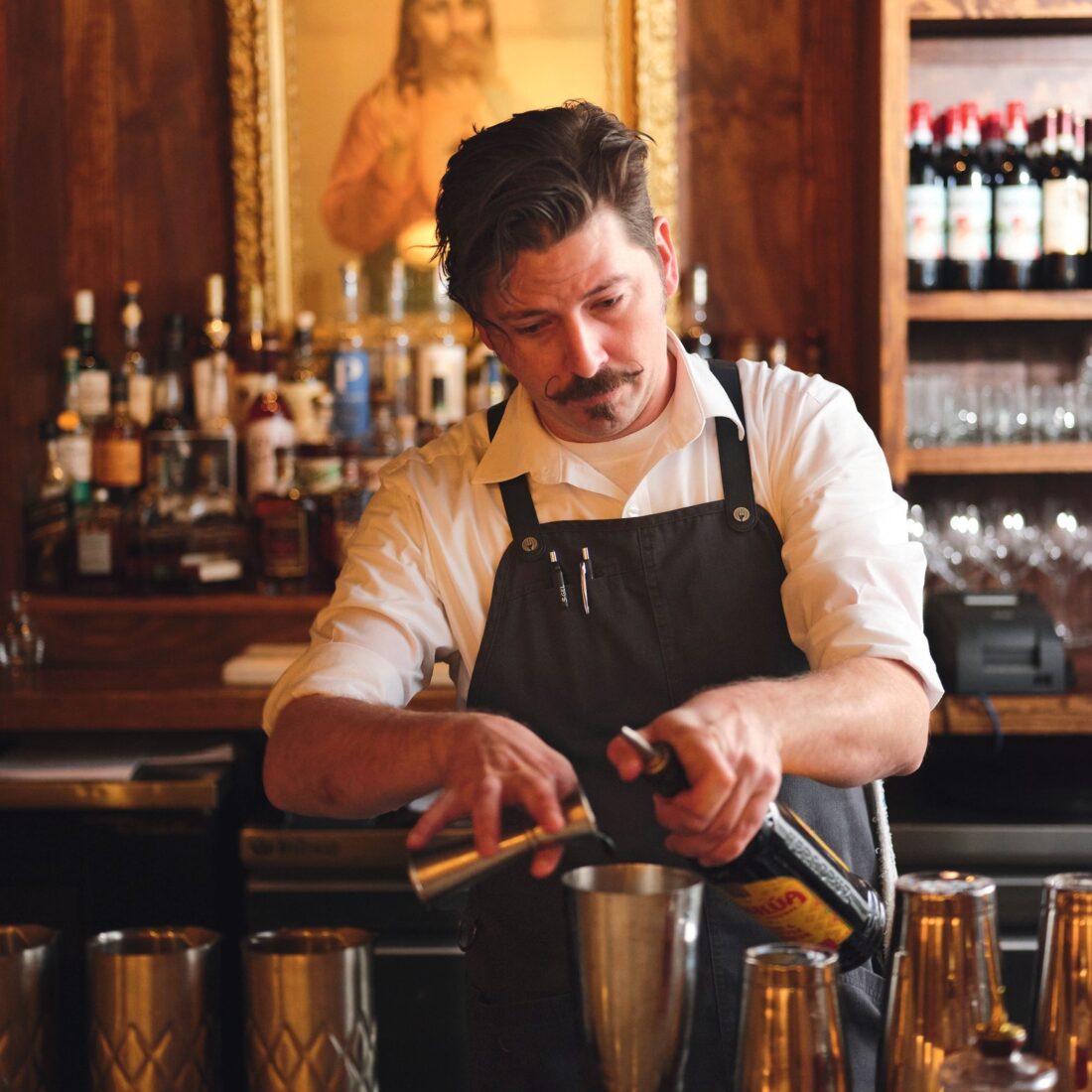
Photo: andrew welch
Mixing drinks at Pulito Osteria.
Chaz Lindsay worked at Eleven Madison Park in New York City before returning to his native Belhaven, Mississippi, a Jackson neighborhood of big trees and small bungalows, where he opened a modern Italian restaurant that serves the capital as a new sort of clubhouse. Red-velour-backed booths, white quartz tabletops, and hand-knotted Persian rugs give Pulito Osteria the look of an old Italian steak house that splurged on a smart interior designer. But a dive into the menu reveals a restaurant that confidently fuses Italian sensibilities (pleasantly chewy house-made mafalde, good olive oil used judiciously) and Mississippi goods (Nature Creek mushrooms, Two Dog Farms collards). Begin with tuna crudo, bejeweled with olives and capers; follow with a Caesar salad, topped with brown-butter panko crumbs, served on a chilled plate; savor a roast chicken, garnished with parsley-heavy salsa verde; and finish with vanilla wafer tiramisu. —JTE
Lao’d Bar
Austin, Texas
Trendy smashburgers across the country usually check the same boxes: a thin, charred beef patty (or two) with lacy edges, draped in cheese and tucked into a soft potato bun. Bob Somsith takes a different tack for his Laotian American version. He flattens a ground pork sausage patty accentuated with lemongrass and fish sauce and smothers it with cheese. The bun gets smeared with a chile-paste-spiked mayo and dressed with rice-fermented pickles. Good luck finding it elsewhere. But the chef behind Lao’d Bar, who made a name for himself in Austin’s renowned food truck scene, offers plenty more at his counterservice restaurant. Somsith riffs on hot dogs with Lao sausage, pierces rib eye steaks on bamboo skewers, and tosses fried chicken wings in crab fat. As his mother has said, it’s very American. —Bao Ong
Prestonrose Towne Bistro
Clarksville, Arkansas
Editor’s note: After this story went to press, the owners of Prestonrose Towne Bistro announced that they would be closing the Clarksville restaurant and mercantile, stating in an Instagram post: “The restaurant business is a brutal one, and this current economy isn’t softening the beloved beast!” It’s tough out there, folks. But their farm and brewery in Paris, Arkansas, will remain open.
It stands to reason that the owners of the state’s most interesting brewery (think beers brewed with dandelion heads and roasted okra seeds) would also open one of its most dynamic restaurants. Liz and Mike Preston, who arrived in the Arkansas River Valley by way of California and New York in 2013, quickly made a name for themselves with their destination-worthy organic farm and brewery. Then came a call from the mayor of Clarksville (population 9,600) and an offer from the local University of the Ozarks to take over an empty building downtown. Now a onetime 1940s-era muffler shop turns out creations such as scratch-made kimchi Reuben Neapolitan pizza and blueberry yuzu Basque cheesecake. Liz, the head chef and brewer, draws almost exclusively on local suppliers and loves to experiment, rotating the menu monthly. She says it was clear: “Clarksville picked us.” —Jordan P. Hickey
Abstrakt Filipino Essence
Jacksonville Beach, Florida
It’s not uncommon for eaters to first experience Abstrakt Filipino Essence through its standout lumpia. Whether boxed up for takeout or delivered to a table of diners who request the fried wands of ground meats as instinctively as they ask for water, the dish is the universal starting point. But for chef-owner JoJo Hernandez, Filipino food is #morethanlumpia. With that hashtag, he spearheaded a movement by Filipino American chefs in the region to showcase the breadth of his homeland’s cuisine. That variety is on offer daily at his bustling restaurant, where the menu includes exceptional kare-kare, a peanut gremolata–graced slurry of oxtail and eggplant puree, and a take on longsilog, a traditional breakfast fry-up, that’s a triumph of pork fat and garlic. —HR
Ajja
Raleigh, North Carolina
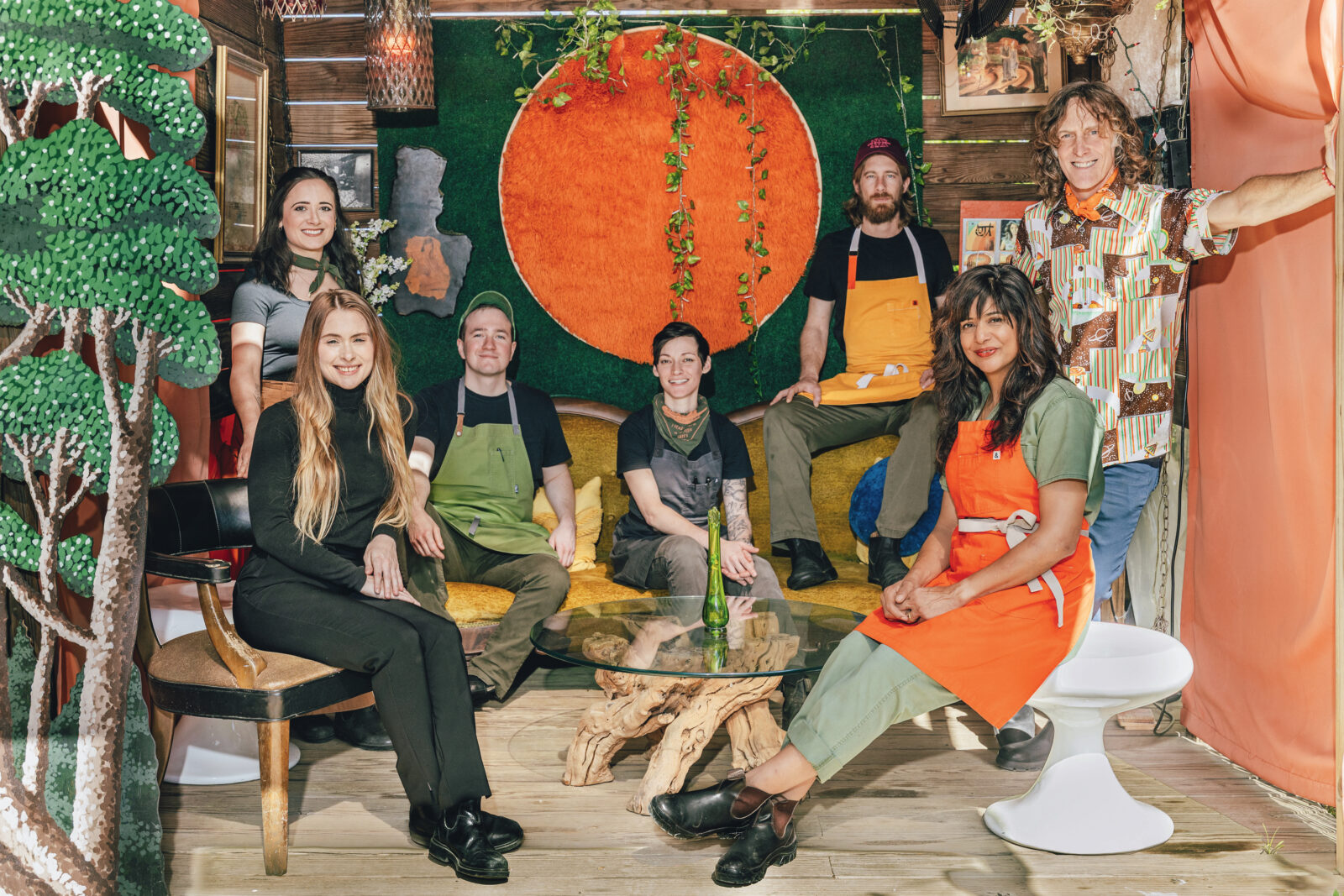
Photo: Baxter Miller, courtesy of Ajja
Cheetie Kumar (second from right) with the team at Ajja.
Because chef Cheetie Kumar and her husband, Paul Siler, spent years touring in rock bands, people sometimes assume lawlessness is the guiding ethos at their Raleigh restaurant. Far from it, man. There are hints of musicianship at Ajja, where a frequently changing menu highlights flavors that span the Levant region of the eastern Mediterranean: The community spirit behind ingredient sourcing is garage bandesque. Harmony is prized, whether among strangers at the upbeat bar or between squash syrup and absinthe in a glass. Yet few chefs are more exacting than Kumar, who pauses to consider how the textures of roasted sweet potatoes and cornbread croutons chime together in shrimp stew, and how the colors of Persian cucumbers and North Carolina roe counterbalance in a snack as vibrant as Ajja’s dining room. —HR
Lost Letter
Richmond, Virginia
As the South’s demographics shift, restaurants inspired by Italy are swiftly being supplanted by restaurants inspired by Italian places in New York. But Lost Letter hasn’t set its sights on a generic red-sauce joint. Rather, owners Patrick and Megan Phelan mean to pay homage to the simple-but-fantastic Via Carota and other West Village trattorias of its ilk. Their vision nightly reaches its apotheosis on the leafy patio, where diners can happily stall out over a couple of glasses of Grillo, warmed olives, and bread swiped through sonorous olive oil. Ideally, though, you’ll want to press ahead through the memorable pastas, smartly dressed in seasonal attire—caramelized onions for winter, pesto in spring—and the beautifully braised meats, with local veggies alongside. —HR
Good Hot Fish
Asheville, North Carolina

Photo: TIM ROBISON
Ashleigh Shanti at her modern fish camp, Good Hot Fish.
After running the kitchen at the lauded Benne on Eagle in Asheville, Ashleigh Shanti opened this stylish and soulful counter-service joint as an ode to her time working at seafood shacks in coastal Virginia. Her modern fish camp plays all the hits—stewed greens, hush puppies, sweet tea—as well as some brilliant remixes. Take her riff on the bologna sandwich, with rounds of cured and smoked trout sizzled with cheese. Or the sweet potato cabbage pancake, finished with sorghum hot sauce and pickled collard stems. As is custom, most of the menu is fried—and that’s a good thing. Because whether you opt for the batter made with flour and yeast or the breading with locally milled cornmeal, the result is shatteringly crispy fish with an interior as tender as a cloud. —Laura Hackett
Belly of the Beast
Spring, Texas
With the help of his mother pressing corn tortillas and his wife, Elizabeth, running the dining room, chef Thomas Bille upholds Houston’s reputation for suburban strip-mall and gas-station restaurants with James Beard and Michelin accolades. Since opening Belly of the Beast late in 2023 in the suburb of Spring, the California native has fit right in with the city’s diverse dining scene. His genre-bending cooking on any given night draws from both his Mexican heritage and an instinct for crossing cultures. That might manifest in humble empanadas tricked out with silky Comté cheese and Kaluga caviar, grilled shrimp slathered in a spicy-and-sour tom yum sauce, or roast duck paired with cherry mole. “Belly of the Beast is like a bridge,” Bille says. “But it’s more than just combining different flavors of global cuisine. We want to offer something old and something new.” —BO
Dōgon
Washington, D.C.
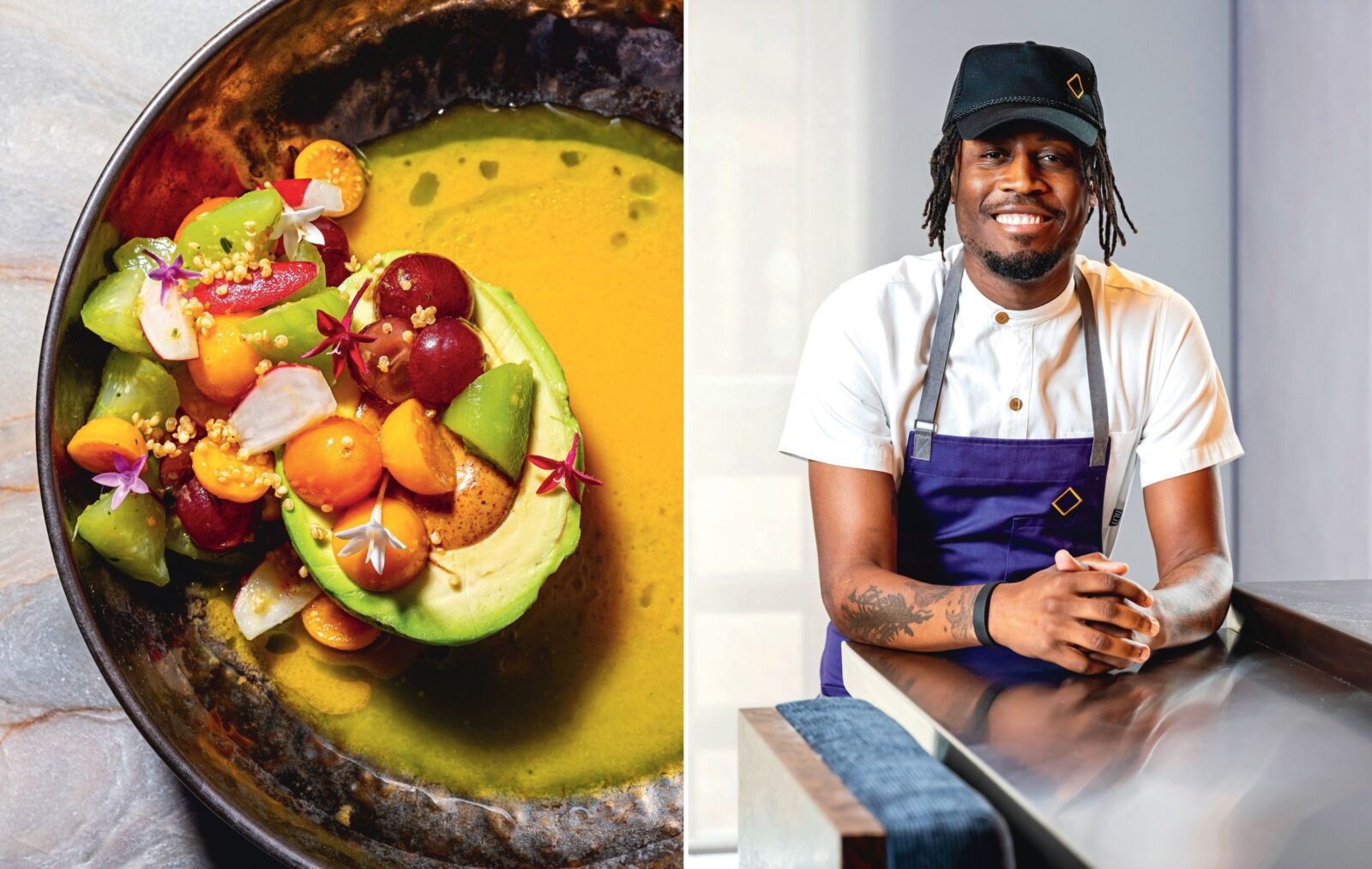
Photo: Scott Suchman
Dōgon’s piri piri salad; Dōgon chef de cuisine Martel Stone.
How is this much flavor possible? That question arises quickly at Dōgon, the restaurant that marks chef Kwame Onwuachi’s return to D.C., where he made his name before hitting it big with Tatiana in New York City. A half roast chicken is so crisp-skinned and juicy that you’ll take a beat before digging in to its bed of Nigerian jollof rice, thrumming with layers of spice. Local blue crab tossed with shito (a Ghanaian chile paste) arrives with silver-dollar hoecakes and creamy Peruvian aji verde sauce for you to assemble into explosive little bites. Stewed greens bring so much umami that you’ll want a spoon to drink the potlikker. Working with chef de cuisine Martel Stone, Onwuachi finds inspiration in every corner of the African diaspora, and Dōgon makes a powerful case that they’re all branches of the same family. —J. Kessler
Ensō
Louisville, Kentucky
After opening in late 2023, Ensō quickly gained a reputation for being a great place to meet up with friends, thanks partly to its array of bourbon, Japanese whisky, sake, and beautiful cocktails. But there’s plenty to love in its Japanese-meets-Southern fare, from sorghum ginger salad and Nashville hot oysters to miso crawfish ramen. A kitchen fire shut it down just before its one-year anniversary, but folks in the Clifton neighborhood rejoiced when it reopened this past spring. You’ll often see chef Lawrence Weeks visiting with diners as he does at North of Bourbon, his first Louisville restaurant, where his dedication to feeding people and building community has already made him a beloved figure. —SH
Salud
Birmingham, Alabama
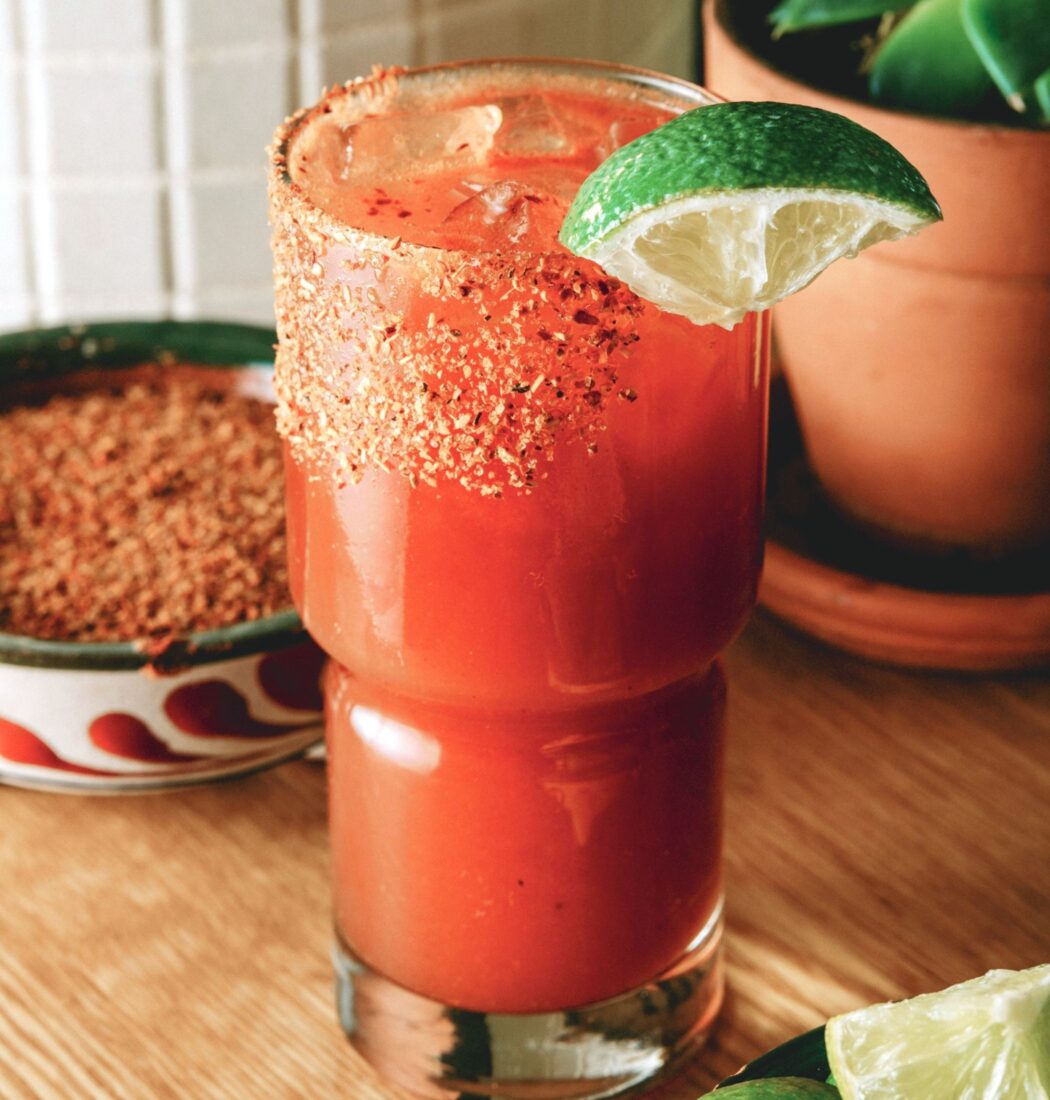
Photo: Mason Erwin
Salud’s Michelada.
Set in a corner building that dates to 1871, the year of Birmingham’s founding, Salud borrows from the Mexican states of Tabasco, Puebla, Yucatán, Oaxaca, and Michoacán. Proprietor Jesus “Chuy” Mendez began his restaurant career when he was twenty. By twenty-nine, he’d earned a job at Highlands Bar and Grill, the city’s finest dining room. Salud, the newest in a galaxy of establishments opened by Mendez and his family, is a counter-service café for contemporary Birmingham. Corner windows frame a downtown now in renaissance. The drinks, developed by business partner José Medina Camacho, include Micheladas stirred with tamarind and rimmed with chamoy. Tacos al pastor come with oversize wedges of fresh pineapple. Tortas are layered with brisket and pinto beans and red onions. Regulars go heavy on the avocado salsa from the condiment bar. —JTE
Saint Bibiana
Savannah, Georgia
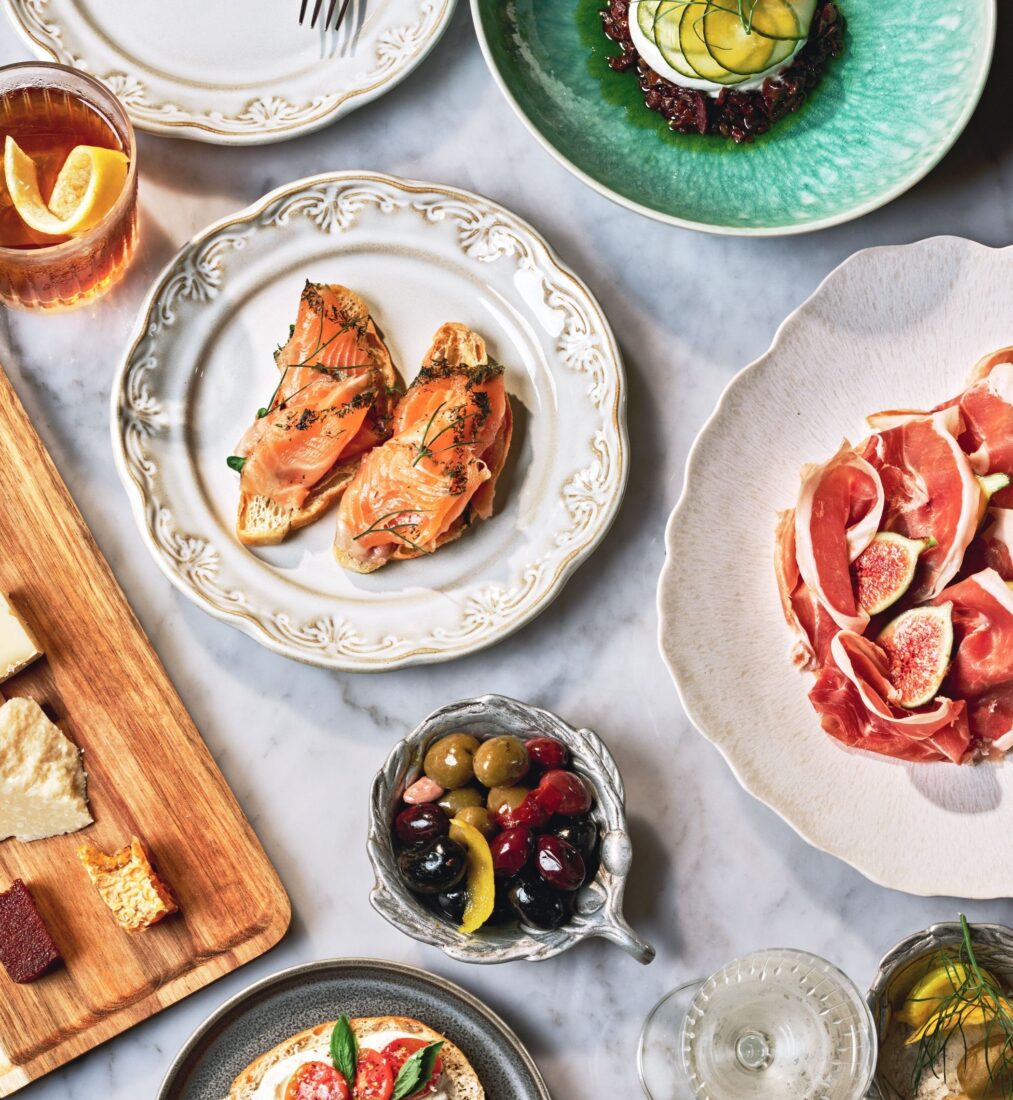
Photo: ANDREW THOMAS LEE
Bites from Saint Bibiana, including house-cured salmon crostini, buffalo milk burrata, and prosciutto with figs.
For diners who like to lament that contemporary restaurants don’t take enough chances, consider for a moment that crudo has become a cliché. At Saint Bibiana, though, the preparation seems as fresh as the fish that enlivens it. The coastal Italian restaurant, on the grounds of the fetching Hotel Bardo overlooking Forsyth Park, finds new expression in stout wedges of local amberjack anointed with lemon oil. Post-crudo, themes of seafood and citrus recur as transportive meals saunter along in summery fashion. Grilled octopus gives way to hand-sculpted cavatelli with spicy ’nduja, followed by whole branzino abloom with blistered heirloom tomatoes. Dessert? Lemon olive oil cake, of course, accompanied by an amaro chosen from an impressively broad list. —HR
Barbecue Without Borders
Nothing new in ’cue? Not so at these three standouts
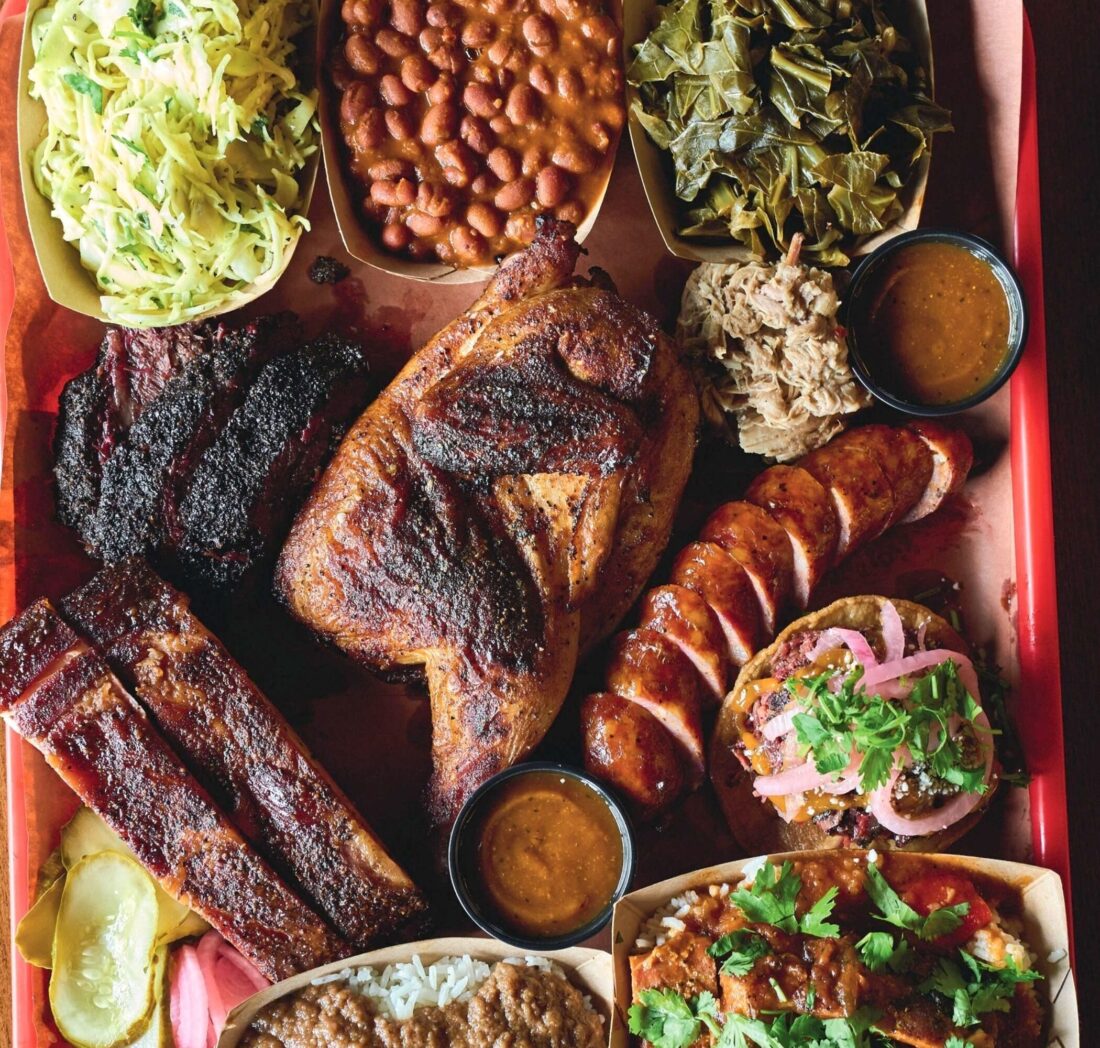
Photo: Peter Frank Edwards
A sampler tray from the Puerto Rican-influenced Palmira, loaded with chicken, sausage, ribs, beef cheeks, and sides.
Gene’s
Atlanta, Georgia
Grilled oysters, topped with gremolata, arrive on tinfoil-lined trays. Smoked ribs, dusted with cornstarch and fried, come in a crunchy shell of fish sauce caramel. Named for pitmaster Avery Cottrell’s Falstaffian orange-and-white cat, and graced by a red alligator that hangs from the ceiling, Gene’s serves as a corner bar and smokehouse, sampling and subverting barbecue traditions from Louisiana, Texas, Georgia, and the Florida Panhandle. —JTE
Merritt Meat Company
Round Top, Texas
Leonard Botello IV, a Texas fixture with his award-winning Truth BBQ, is putting Round Top on the map for more than its antique shows. The wunderkind pitmaster took over his late friend and mentor Lee Ellis’s smokehouse after his passing in 2023, using Ellis’s middle name to open it as Merritt Meat Company. While he covers the Texas standards, you’ll also find brisket-filled cheesesteaks and banh mi with sides like Thai peanut coleslaw and Oaxacan Brussels sprouts. “Lee helped me find my voice,” Botello says. “I’m keeping his legacy alive.” —BO
Palmira
Charleston, South Carolina
Palmira’s inspiration wafts from Puerto Rico, where pitmaster and owner Hector Garate grew up. But the heritage hogs—stroked with sofrito and smoked whole for half a day—hail from nearby Dorchester County. Their deeply flavorful meat competes with melty beef cheeks for carnivores’ attention: Get them both, and a side of tostones, too. —HR
A Toast to Wine Bars
Uncorking the best of a new slew of by-the-glass beauties

Photo: Potential New Boyfriend
Orange-saffron pound cake at Potential New Boyfriend.
Madeira Park
Atlanta, Georgia
Some drinkers adore natural wines. Others practically boycott them. “We’re dancing the line of that culture war,” says Miller Union chef Steven Satterfield, one of a trio of oenophiles behind this new Eastside destination. However they’re vinified, the group chooses wines that best express the grape and the place it was grown, and with nearly thirty choices by the glass, everyone can find a bottle to love. —J. Kessler
Potential New Boyfriend
Asheville, North Carolina
While savories dominate most wine bar food menus, Potential New Boyfriend gleefully skews sweet, offering the likes of Dubai sundaes and citrus-scented pound cake to pair with its lineup of vermouths, fortified wines, and sparklers. Completing the swanky lounge’s youthful vision of adulthood, in which dessert comes first and always, are its first-rate sound system and vinyl collection. —HR
Golden Age Wine Garden
Birmingham, Alabama
You never know what lurks in an alleyway. In the case of Golden Age Wine Garden—the offshoot of a beloved suburban bottle shop and early champion of natural wines—bistro tables, twinkle light strands, and a comfortably continental ambience make it hard to resist a glass of bracing Spanish white with French bread and Belgian cheese (or, if you prefer, crackers and pimento cheese). —HR




